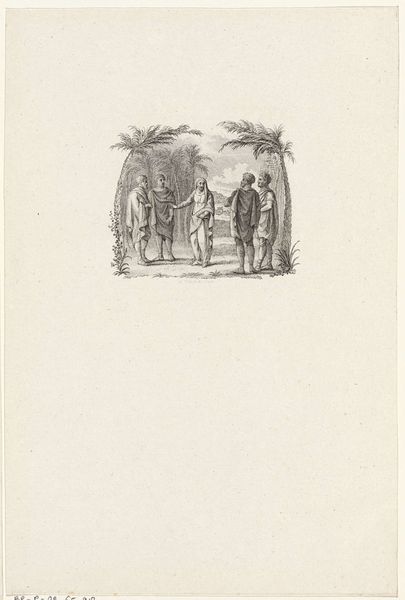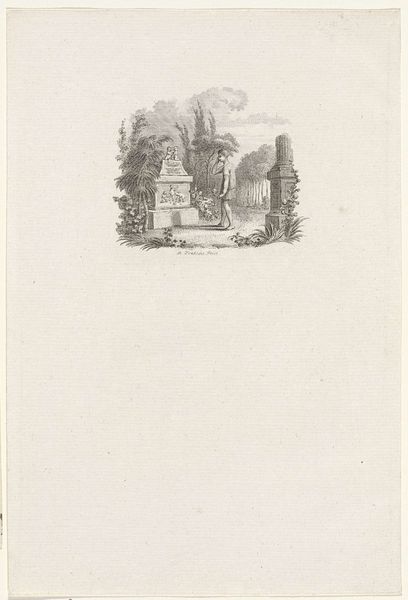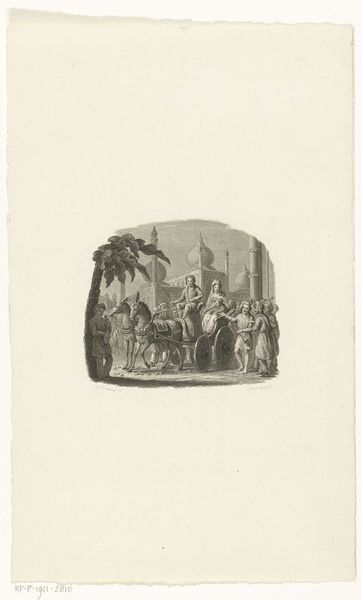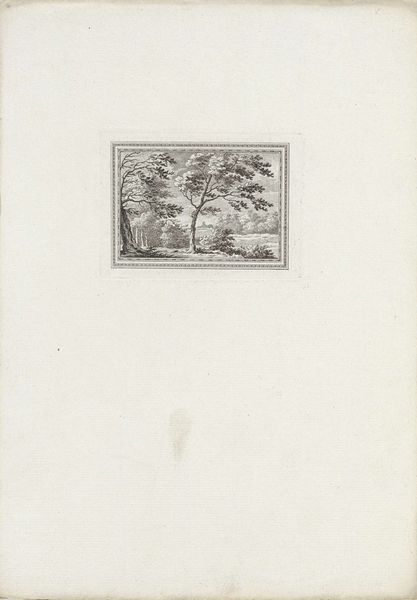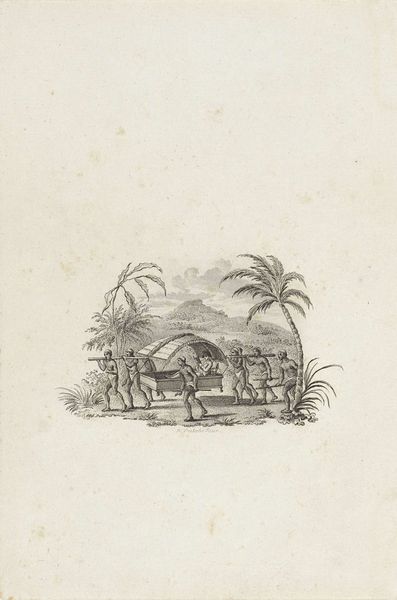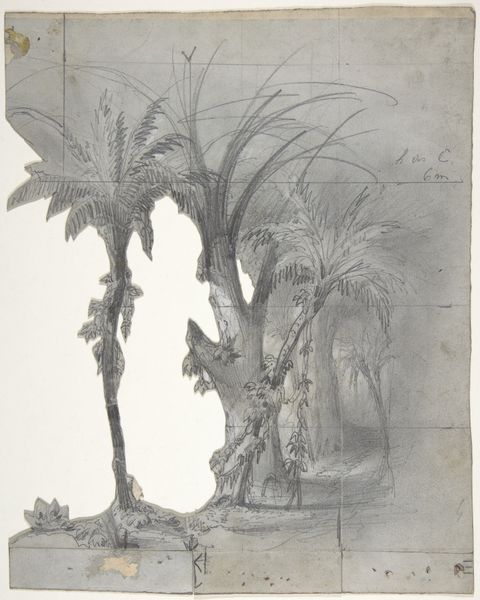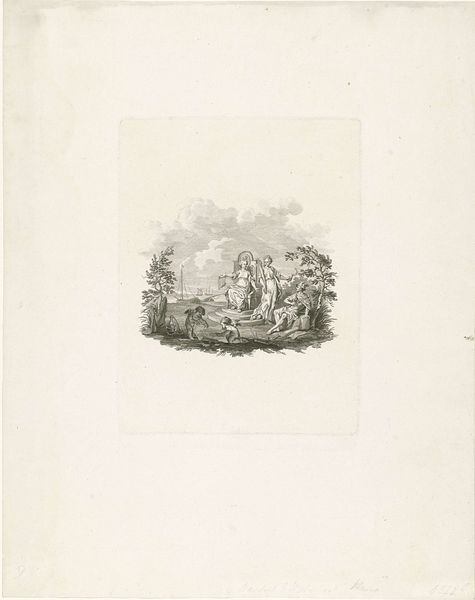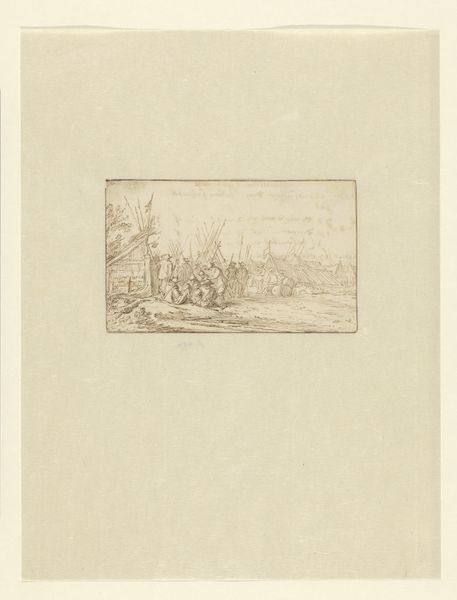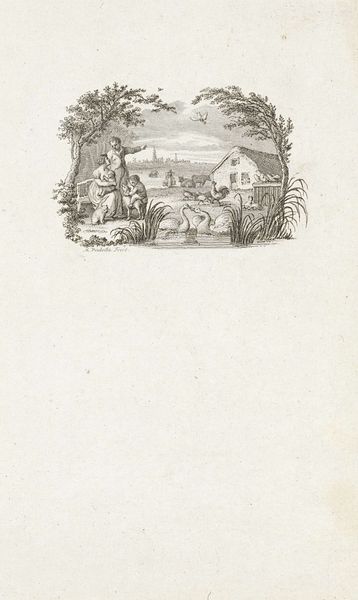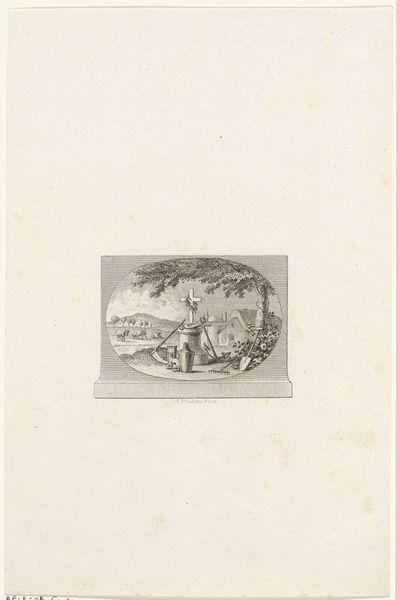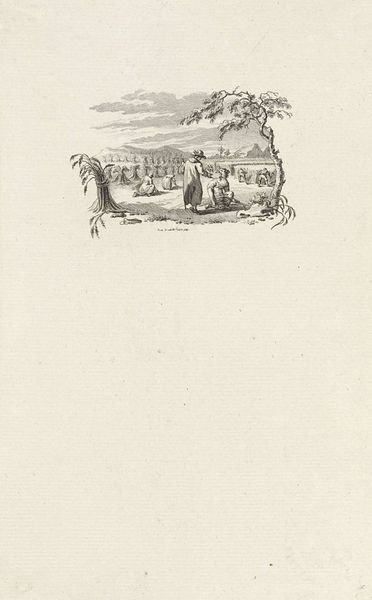
Dimensions: height 251 mm, width 166 mm
Copyright: Rijks Museum: Open Domain
Curator: This engraving, “Man with a Child and a Second Man in a Landscape,” comes to us from Reinier Vinkeles, likely sometime between 1751 and 1816. What do you make of it? Editor: I'm immediately struck by the tension here—something about the gaze of the man on the left feels accusatory, despite the pastoral setting. And it's hard to ignore the power dynamics at play with the man, the child, and what I perceive to be some form of subjugation, if not outright slavery. The very inclusion of this idyllic European estate as background adds another layer of meaning about wealth. Curator: Well, let’s first consider the composition itself. Notice the stark linearity achieved through the engraving technique. The foreground figures are carefully positioned, creating a sense of balance that contrasts with the lushness of the implied background. Note the delicate etching and hatching: it is interesting how Vinkeles evokes spatial depth with this technique, too. Editor: That balance feels disrupted to me. The weight given to the two men is so distinct—one seems to occupy a different visual plane from the others—which highlights that imbalance of power I noticed at first glance. Also, while the fine lines are indeed skillfully executed, they arguably create a certain emotional detachment for the viewer, reinforcing the scene’s status as a captured moment of someone else’s narrative. Curator: But it is precisely this detachment that invites a deeper analysis of the artist’s intention. The controlled execution, devoid of sentimentality, presents the figures as types, allegorical representations of broader societal structures perhaps, not as personalized portraits imbued with subjective emotion. The light emphasizes their forms in such a stark way. Editor: Perhaps. However, as modern viewers, it is impossible to divorce ourselves from the historical context of the period. What narratives are silenced in favour of European male dominance in these historical depictions, I wonder? Even seemingly innocuous genre scenes were, consciously or unconsciously, perpetuating particular ideologies. Curator: A perspective worth remembering as we depart; consider this carefully crafted landscape in which the human figures become elements within a formal arrangement. Editor: An arrangement that prompts difficult questions of the past and its implications in the present.
Comments
No comments
Be the first to comment and join the conversation on the ultimate creative platform.
